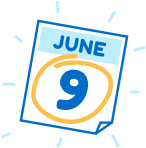
My Life as a Quadriplegic
When I first thought about writing a story about my disability, and how my life has been affected by the concepts and advancements in accessibility and universal design. I wondered if it would be as painful to write as with one’s own resume or bio, or to highlight some of mine and others struggles or challenges, or what seem like the “super-human things I and others can do. But after careful consideration I thought I’d give it a go. In addressing my life’s time frame and learnings, and without boring the heck out of you, I thought I would give you the Cole’s Notes version.
In 1975, at the age of 17 I broke my neck and suffered a spinal cord injury as a result of an inner tube accident. Inner tubing is sliding down hills in winter time, on the inner tubes from cars or trucks. My spinal cord injury left me paralyzed from the upper chest down, with no leg abilities, limited arm movement, and no hand function. My official diagnosis, after my surgery to fuse my vertebrae together with (part of my hip bone being used to replace my 5th vertebrae) was with my degree of paralysis, I would be classified as a C-4,5,6 incomplete quadriplegia, which in a nut shell means full, or partial paralysis of all four limbs.
In addition, in 1993 I experienced a second spinal cord injury (which is still a mystery of how) resulting in the C-7 vertebrae breaking in half, and essentially compressing the spinal cord at that level similar to an hour glass shape. This resulted in a little more loss of function, which again was another learning opportunity.
On the technical side, a little background on spinal cord injuries. When the spinal cord is injured, the brain cannot effectively communicate with all the parts of the body, and so the individual’s sensation and movement can become impaired and/or limited. The severity of the injury and the level at which it occurred, determines the amount of function and sensation a person may have. For example, injuries above the C-4 level may require a ventilator or electrical implant for the person to breathe, much like that of Christopher Reeves (Super Man) for example.
Further, when someone damages their spine, it can be diagnosed as complete and/or incomplete damage. A complete spinal cord injury can be described as when the spinal cord is fully compressed or severed, completely eliminating the brain’s ability to send signals below the point of injury. An incomplete spinal cord injury occurs when the spinal cord is compressed or injured, but the brain’s ability to send signals below the site of the injury is not completely removed.
Most spinal cord injuries result in loss of sensation and function below the level of injury. Spinal cord injuries may also cause a number of other complications including: pain, blood clots, skin breakdown/pressure sores, related injuries, spastic muscles, osteoporosis and fractures, urinary tract Infections, pneumonia/respiratory problems, autonomic dysreflexia, loss of bladder and bowel control.
In writing this, prior to my accident I was an independent, athletic individual who loved hard manual labour. In trying to revisit and capsulize the last 46 years of my life, I’d like to start by saying that when I had my injury, what seemed to be such an innocent, fun-filled activity, in an instant I was transformed into a new and frightening world, with so many uncertainties and challenges ahead.
What plans, and/or life direction I may have had at the time, changed in the blink of an eye. From having high school track records, running or riding daily across the city, enjoying and participating in all seasonal types of sport activities from individual to team pursuits, from working with horses to roofing jobs, all branches on my life’s path at the time seemed to close and go away at no choice of my own.
From that initial moment and following with the blur of not being able to move, not being able to feel anything while laying on the cold snow-covered hill, to learning new hospital, medical and rehabilitative terminology, to often pain-ridden rehabilitation treatments, to discovering new opportunities, and finally towards a new life being forged. For what now seems like a lifetime ago, from spending 17 months in my rehabilitation program, thanks to improved emergency response, improved technologies, and a better understanding of spinal cord injuries, the time spent in an individual’s rehabilitation program has been greatly reduced to roughly 6 months.
On a personal note, 17 months in a hospital/rehabilitative type of setting seems like along time. However, from my own experience working in the field, compared to the time I spent in finding my new abilities and “yes” limitations in, starting to work on a support network, with exploring my housing, transportation, education, and career options, 17 months was a blessing. Nowadays, people are being moved through the system(s) at a pace that may not allow for these individuals to develop a comfort level or understanding of their spinal cord injury, to start to discover the benefits and opportunities ahead of them, or the complications of having a spinal cord injury.
After my hospitalization, I went to live in a group home that we assisted in designing, then a variety of independent living situations from renting to home ownership. All along realizing that prior to my injury, I had led such a carefree, independent, active lifestyle, to now being dependent on, and the recipient of the generous support of family, friends, co-workers, caregivers, and strangers to perform even the most mundane of tasks, to assisting with bowel/bladder and hygiene needs. To dressing and feeding me, and to transferring me from my bed to wheelchair. It should be noted that there are numerous things that I can do unassisted, which at times have become the norm with no second thought. Then there are those times when even to this date, I surprise myself.
There is a great deal of truth in the term “lifelong learning”. After 46 years post injury, I have been witness to, and the benefit of many advancements in accessibility and universal design concepts, strategies relating to technology, architecture, housing, transportation, medicine, service dogs, government programs, etc., towards increasing a persons’ independence and full community participation. Through conversations and my daily activities, I try to let people know that although their diagnosis may be permanent, through their life’s journey there will be many changes, setbacks and achievements. Some as a result of the above, some as a result of findings and solutions of their own, and some as a result of an aging body.
It should be noted that even after 46 years, whether it be myself, a family member, a co-worker, or a friend, everywhere I want to go the first question we have to ask is “is the place going to be accessible?” The reality is that most of the places are not accessible, and trying to determine which actually are from the ones that are not, can be a full time job.
In trying to adhere to my Cole’s Notes theme, without providing you with my professional bio and/or resume, we should try and keep in mind that my story is not unique. If you talk with any person with a disability they could tell you stories similar to mine, of trying to navigate inaccessible places, or finding their own creative solutions to do things. Sometimes it can be like the television show MacGyver.
As research and technology continues to make advancements in accessibility and universal design, there is so much that remains to be understood about diversity, accessibility and inclusion. And, no matter how much we try, every individual and disability is not predictable, and will affect each individual differently throughout their lifespan.
I once heard that “a disability does not define a person, it is but a single trait among many that make them who they are. When we focus narrowly on a disability, we can miss the whole person”.
In closing, to quote Forest Gump: Mama always said “Life was like a box of chocolates, you never know what you’re gonna get.”


